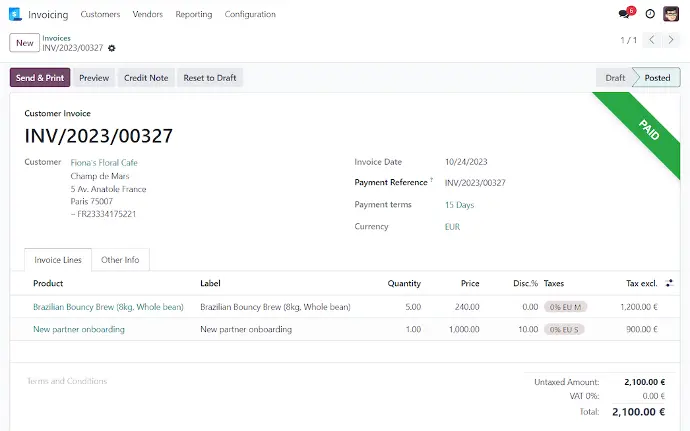In the corporate landscape, preparing for the future through digital transformation isn't merely optional; it's increasingly essential for navigating evolving market dynamics. A clear indication of this imperative is the mandatory adoption of electronic invoicing, set for 2026 in Belgium and 2028 across the entire European Union.
Enterprises now find themselves at a crossroads as electronic invoicing becomes obligatory for all B2B transactions in the coming years. While this transition may initially seem daunting, it also presents an opportunity for companies to embrace the digital age. Here's a comprehensive overview of what you need to know.
The paradigm shift to e-invoiving
Electronic invoicing, or e-invoicing, represents a paradigm shift from traditional paper-based processes to digital transactions. By digitising invoicing procedures, businesses can streamline operations, reduce errors, and enhance efficiency. Additionally, e-invoicing facilitates faster payment cycles, improves cash flow management, and minimizes the environmental footprint associated with paper-based documentation.
Promoting Transparency and Accountability
But the advantages go beyond mere convenience. E-invoicing fosters transparency and accountability in financial transactions like never before. Businesses can monitor payment statuses in real-time, mitigate fraud risks, and maintain thorough audit trails. This transparency fosters confidence among stakeholders and ensures regulatory adherence
On a broader scale, e-invoicing ensures regulatory compliance and simplifies cross-border transactions by standardizing invoicing formats and overcoming language barriers. In the EU, member countries will leverage PEPPOL (Pan-European Public Procurement Online), a system facilitating secure data exchanges between authorized access points. PEPPOL harmonizes invoice format, content, and structure, automating invoice creation for companies procuring goods or services through the platform.
Seamless integration with other softwares
Another notable aspect of e-invoicing is its seamless integration with existing accounting or ERP software like Odoo. This integration eliminates redundant data entry, reduces administrative burdens, and ensures data accuracy across multiple systems. Thanks to the fact that Odoo is a direct Peppol access point, meaning there is no need to use an additional external system, enterprises can effortlessly incorporate electronic invoicing into their workflows, ensuring compliance while enhancing operational efficiency.
Odoo therefore offers a centralized platform encompassing invoicing, accounting, inventory management, and customer relationship management, streamlining operations, cutting costs, and driving sustainable growth.
While Odoo serves as a prominent example, various providers offer solutions tailored to individual business needs. Selecting the right integration based on existing infrastructure and specific requirements is crucial.
Embracing a strategic opportunity to sustainable growth
In conclusion, mandatory e-invoicing in Europe represents not just a regulatory requirement but a strategic opportunity for businesses to embrace digital transformation. By leveraging the power of e-invoicing and embracing solutions like Odoo, businesses can unlock significant operational, financial, and competitive advantages, positioning themselves for success in the ever-evolving global marketplace.
Discover Odoo's Invoicing App
Odoo Invoicing is the simplified billing process you have been dreaming of!
Create professional invoices, customize them to your liking, and get paid faster than ever.

